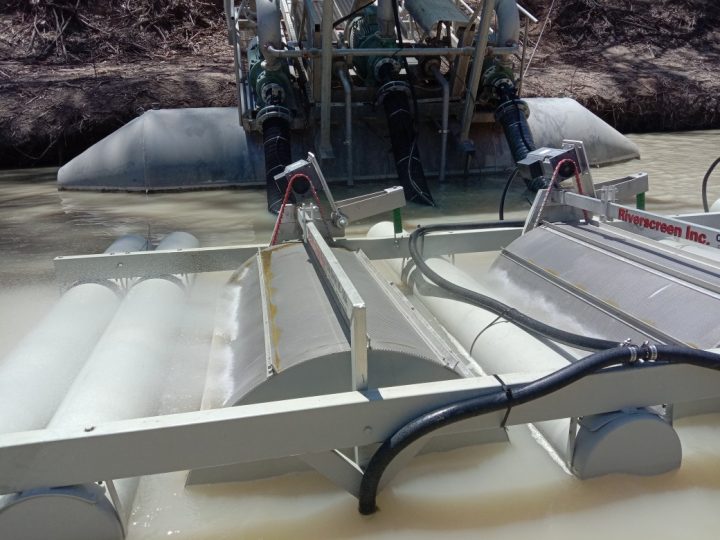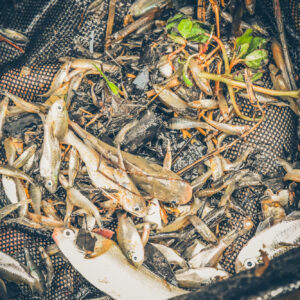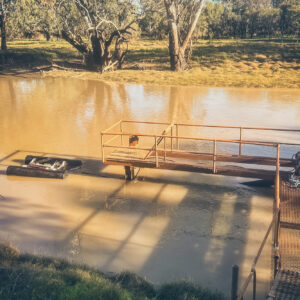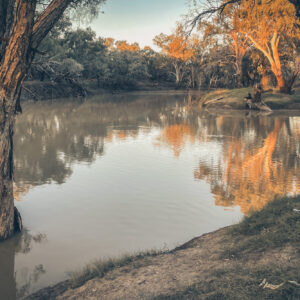Fish Screen Solution to Bryozoan Pipe Blockers
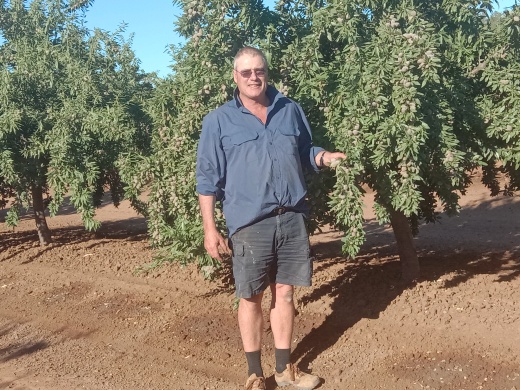
A sci-fi horror movie! That’s the scene on show if you put a drop of river water under a microscope.
It buzzes with life. Strange. Hideous. Beautiful. The river is alive at a micro and macro level. It plays home to microscopic bryozoans. This asexual organism is essential to the Darling River’s ecosystem. They’re harmless until they grow unchecked. They can even double their size in a week. If they find a home in a farmer’s irrigation pipe, this can cause reproduction at a rapid rate. Their mass blocks pipes and creates hours of work. Crops can’t get water. Manpower needs allocating. Costs begin to rise. This was daily battle that Andrew Rix, an almond grower in Wentworth NSW, had to suffer through. Fortunately, he found an environmentally sound solution that was also fish friendly. The solution? A fish screen.
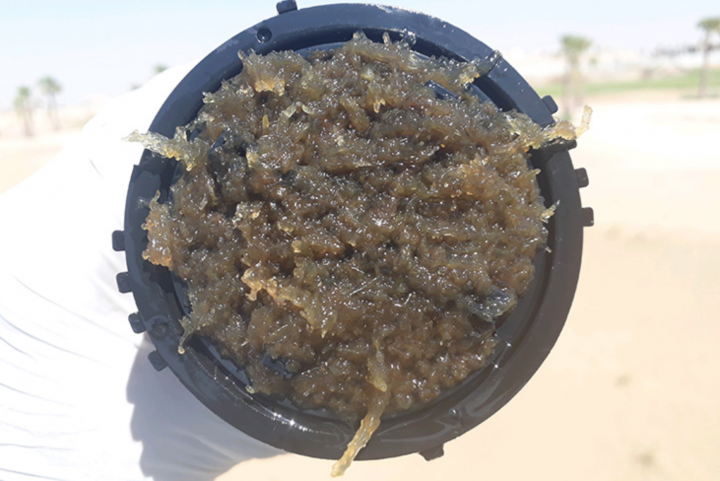
Bryozoans blocking irrigation pipes
IRRIGATION PROBLEMS
Rix farms use 800 megalitres of water for their almond trees. This much water can present its own set of problems. “We’ve always had a lot of trouble with muck getting into our filters,” explains Andrew Rix. “Even when the Darling River runs strong, the water can be pretty dirty. This meant our irrigation filters had to be hand cleaned a lot. It was almost a full-time job to make sure they were operational. Although we had filters, most blockages were down to a critter called a bryozoan. They create colonies on the insides of the irrigation pipes that can cause the whole irrigation system to fail. It’s a problem that had been going on for years. Now that they’re gone, we’ve saved so much time and the cleaning costs have gone down to zero. It’s incredible.”
THE FISH SCREEN SOLUTION
Luckily, there was a solution. While bryozoans aren’t fish, a fish screen does stop them. “I’d researched fish screens in the past, and they looked positive, but we weren’t in a position to afford it,” explains Rix. “I went to a neighbour who had a fish screen. He was very impressed by it. It clearly worked. Eventually, we were lucky enough that the government was able to put in for up to 25% of the cost. That really helped push along the idea. The results were instant. The fish screen’s fine mesh stopped the bryozoans from entering our irrigation system. You could see them captured by the screen. Our pipe maintenance stopped almost instantly. We now have less work to do and can concentrate on other things.” Fish screens protect native fish, and they reduce farm costs long term.
A LOWER CHEMICAL FOOTPRINT
How do most farmers get rid of pipe-blocking bryozoans? Flushing pipes with corrosive chemicals like chlorine. It’s costly. It’s time consuming. It can damage the land. “We converted to organic farming 10-15 years ago,” explains Rix. “This fish screen fits in with our low impact sustainability philosophy. The fish screens have reduced our chemical usage. There is minimal irrigation pipe back flushing. Water usage is lower. There is cost reduction. Our drip irrigation works very well now. Overal, I’m super happy with the end results. The true test will be the impact in 5-10 years down the track. So far, so good. If a farmer can find his way to installing a fish screen, they’ll never regret it.” It’s a clear winner for the farm at lowering costs and manpower. These are just secondary benefits. The river’s ecosystem really is the true victor.

Rix used to back flush his old inline filter every hour. His fish screen means he doesn’t have to back flush anymore.
FISH SCREEN POWER
Fish screens stop fish larvae and fingerlings from being drawn into the pump. Andrew saw this firsthand. “We used to pump water into a dam I used to fish in,” says Rix. “Fish were definitely getting sucked into the pump. The Lower Darling Basin in a spawning ground for our native fish so using a fish screen protects them. It helps increase fish volume stay in the river. It has helped me. It’s helped the river. I strongly recommend it for any farmer.” With cost conscious farmers like Andrew improving profits while elevating river health, screens can transform a farms and an ecosystems productivity. To learn more about fish screens, visit here. To date, Fish Screens Australia has worked with farmers, government and private organisations to demonstrate the effectiveness of fish screens in a variety of environments and situations. If we pull together, we can change for the better.
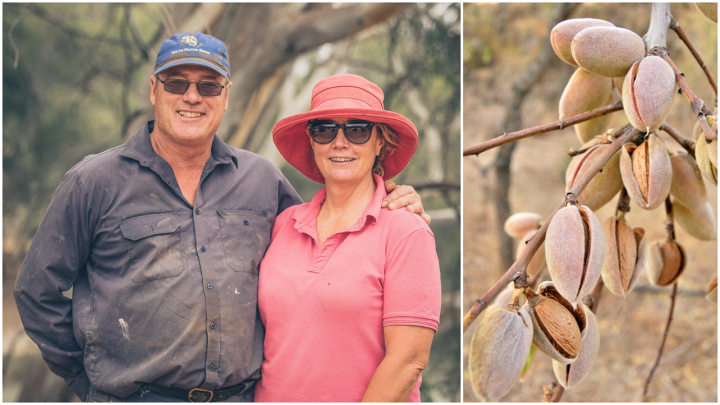
Without having to back-flush anymore he needs less water to keep his business running.
